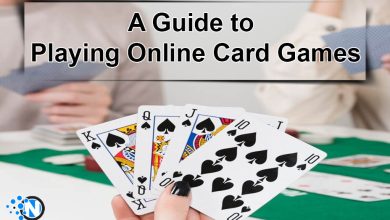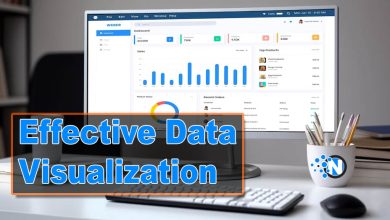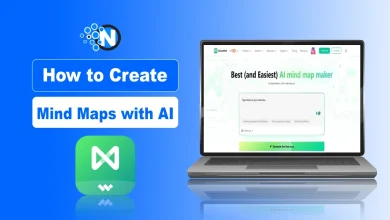The Secret to a Successful Influencer Campaign for Your E-Commerce Brand

It’s not news that social media usage is on the rise in recent years. Additionally, online shopping has become a major part of consumers’ lives. With the effects of the coronavirus pandemic on spending habits, consumers are increasingly searching online for products at increasing rates. It is likely that these habits will continue, even after the pandemic. This is because we have come to realize the ease of accessing everything online.
E-commerce businesses are likely to heavily rely on digital and social media strategies for advertising. You might have heard of influencer marketing or you may be thinking about it. With 90% of marketers suggesting influencer marketing to be effective, it’s definitely worth thinking about. Learn how to create a winning campaign.
Planning
Plan is the first step to any influencer marketing campaign. For your campaign to succeed, you must plan well. If you’re new to this form of marketing, I would recommend doing some research, such as taking a look at our influencer marketing guide. This is a complete guide that you can use at any stage of your campaign.
There are a few things you need to know about the planning process.
1. What is the purpose of your campaign?
You will need to identify your goals here. You might want to increase brand awareness or drive sales.
2. Who is your target audience
It is important to identify the audience you wish to attract. You should consider their interests as well as their demographics. This could be the exact same audience that your brand is targeting, or it may be a new consumer you are targeting with this campaign.
3. What’s your budget?
Your willingness to invest the amount in this campaign will impact the type of influencers and the number of them, as well the social media channels and media types. Your budget may allow you to work with a nano influencer, a mega influencer, or a KOL. You will also need shipping and handling fees.
4. What’s your timeline?
You will also need to determine the desired timeline for the campaign. You may be aiming to launch a campaign at a certain time or date. Perhaps you have a new seasonal line that you want to launch in the festive season. Keep in mind that some influencers may have their schedules pre-booked.
Incentive
You will have set a budget and considered what incentive you can offer influencers. Incentives may be monetary, or non-monetary depending upon the value of your product/service.
Understanding the influencer’s perception of your product is the best way for you to think about it. Influencers will accept your product only if you can show them that it is of high value. If your product has a low value, influencers may accept it as is. However, they might ask for payment.
It depends on which type of influencer you are working with. Although micro and nano influencers are not likely to charge fees for their services, medium and macro influencers may. There are often managers who charge fees as well.
E-commerce is a great way to get discount codes for influencers by working with a commission-based incentive. You will get your product promoted and they will provide a discount code to your audience. This will allow you to give your customers money off your checkout. This increases traffic to your website, and leads to increased sales. Consumers will be more inclined to purchase at a discounted rate. They will also benefit because they will receive a commission on every user of their code.
Locating influencers
When the basics of your campaign are defined through your planning process, the next step is to find influencers that will be right for your brand and your campaign. There are many ways to do this, and some of them will be easier than others.
You can manually search for influencers on Instagram. While this is time-consuming and may not be the best option for your company, it could prove to be the most effective. These are some tips to get the best results.

* Search for influencers on your list. This will let you know if they are already fans.
* Make sure to check your brand tags in case you are contacted by influencers.
* Please take a look through your comments as influencers may be interested.
A platform that promotes influencer marketing is recommended for a more successful search. This will allow you to create search filters that narrow your search to specific influencer characteristics. You can also analyze influencer profiles to make sure they are a good match for your brand.
Whatever method you choose to use, it is essential that you analyze profile metrics. Let’s take a look below. Some brands believe that the most important thing is how many followers you have. Influencer marketing is different. Instead, focus on performance metrics like engagement rates.
We can see how this influencer engages with their followers, in comparison to the average engagement rate for their respective category using Heepsy data. This shows the interaction between influencers and followers. It also shows an audience’s interest in them through comments and likes. If you base your decision on the number of followers an influencer has, it is possible to have your product promoted to an indifferent audience. It is far more important to engage the audience, even if they are a smaller group.
Another example we can see in Heepsy is the authenticity metrics of audience members. When analysing Instagram, YouTube influencers, or TikTok influencers directly on the platforms, you can easily stumble across influencer fraud. You should be aware of the possibility of comments and likes being spread across multiple posts. With an influencer marketing platform artificial intelligence will detect suspicious behaviours and provide data about expected influencer authenticity.
You can track your campaign
You must also consider how you will monitor your campaign’s progress before you launch it. It is important to establish a method to track key performance indicators so that you can analyze campaign results at the conclusion.
One of the most popular tools used by e-commerce’s is Google Analytics. This free analytics tool allows you to track important information such:
* Website traffic generated by influencers
* Influencers drive sales
* Public content
* Influencer content impressions
* new followers gained
* discount codes used
An analytics tool will help you to keep track of all metrics so that you can analyse the success of your campaign. Data can be used to identify elements such as which influencer achieved highest results, which social media platform performed the best, and the sales generated by influencers.
Conclusion
With this knowledge, you will be able to successfully run an influencer campaign. One thing that I would like to emphasize is the importance of planning and research.
Influencer marketing can help e-commerce companies achieve any goals they may have. However, successful campaigns require a thorough planning process to ensure the best match of influencers and brands.




